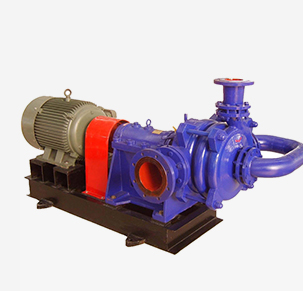Tagalog
- Afrikaans
- Albanian
- Amharic
- Arabic
- Armenian
- Azerbaijani
- Basque
- Belarusian
- Bengali
- Bosnian
- Bulgarian
- Catalan
- Cebuano
- Corsican
- Croatian
- Czech
- Danish
- Dutch
- English
- Esperanto
- Estonian
- Finnish
- French
- Frisian
- Galician
- Georgian
- German
- Greek
- Gujarati
- Haitian Creole
- hausa
- hawaiian
- Hebrew
- Hindi
- Miao
- Hungarian
- Icelandic
- igbo
- Indonesian
- irish
- Italian
- Japanese
- Javanese
- Kannada
- kazakh
- Khmer
- Rwandese
- Korean
- Kurdish
- Kyrgyz
- Lao
- Latin
- Latvian
- Lithuanian
- Luxembourgish
- Macedonian
- Malgashi
- Malay
- Malayalam
- Maltese
- Maori
- Marathi
- Mongolian
- Myanmar
- Nepali
- Norwegian
- Norwegian
- Occitan
- Pashto
- Persian
- Polish
- Portuguese
- Punjabi
- Romanian
- Russian
- Samoan
- Scottish Gaelic
- Serbian
- Sesotho
- Shona
- Sindhi
- Sinhala
- Slovak
- Slovenian
- Somali
- Spanish
- Sundanese
- Swahili
- Swedish
- Tagalog
- Tajik
- Tamil
- Tatar
- Telugu
- Thai
- Turkish
- Turkmen
- Ukrainian
- Urdu
- Uighur
- Uzbek
- Vietnamese
- Welsh
- Bantu
- Yiddish
- Yoruba
- Zulu
Telephone: +86 13120555503
Email: frank@cypump.com
Nov . 22, 2024 05:39 Back to list
pipeline pumping
Understanding Pipeline Pumping A Critical Component of Modern Infrastructure
Pipeline pumping plays a vital role in the transportation of various fluids, including water, oil, and gas, across vast distances. As a critical component of modern infrastructure, understanding the mechanisms, technologies, and challenges associated with pipeline pumping is essential for engineers, environmental scientists, and policymakers alike.
The Basics of Pipeline Pumping
At its core, pipeline pumping involves the use of pumps to move liquid or gas through a network of pipes. The process begins with the selection of the appropriate pump, which is determined by factors such as the type of fluid being transported, the distance it needs to travel, and the elevation changes along the route. Common types of pumps used in pipeline systems include centrifugal pumps, positive displacement pumps, and submersible pumps, each designed for specific applications and conditions.
Centrifugal pumps, for instance, operate by converting rotational energy into hydrodynamic energy, making them suitable for applications that require high flow rates. In contrast, positive displacement pumps are ideal for moving thick or viscous fluids, as they can maintain a constant flow rate regardless of the pressure conditions.
The Pipeline Infrastructure
The infrastructure associated with pipeline pumping includes not only the pumps themselves but also a comprehensive network of pipes, valves, and monitoring systems. Pipes are typically made from materials such as steel, polyethylene, or PVC, selected based on factors like durability, corrosion resistance, and the physical properties of the fluid.
Valves play a crucial role in managing flow and pressure within the pipeline system. They allow operators to control the distribution of fluids, shut down sections of the pipeline for maintenance, and prevent overpressurization. Monitoring systems utilizing sensors and automation technology provide real-time data on flow rates, pressure levels, and potential leaks, ensuring the safety and efficiency of the pumping operation.
Efficiency and Optimization
pipeline pumping

With the increasing demand for energy and water resources, optimizing pipeline pumping systems has become imperative. Engineers utilize various strategies to improve efficiency, such as selecting the right pump size, reducing friction losses in the pipes, and implementing variable speed drives. Advanced simulations and modeling techniques allow for the assessment of different configurations and operational scenarios to find the most efficient setup.
Moreover, the advent of smart technologies has transformed the landscape of pipeline pumping. Internet of Things (IoT) sensors, artificial intelligence (AI), and machine learning algorithms can analyze vast amounts of data, predicting maintenance needs and enabling proactive interventions. This not only reduces downtime but also extends the lifespan of the equipment.
Environmental Considerations
While pipeline pumping is essential for energy and resource distribution, it also comes with environmental responsibilities. Pipeline failures, leaks, and spills can have devastating consequences on ecosystems and communities. Therefore, stringent regulations and monitoring protocols are put in place to minimize risks. Regular inspections, maintenance schedules, and corrosion prevention methodologies are essential practices within the industry.
Moreover, the transition toward more sustainable practices is becoming a priority. For example, many companies are exploring the use of renewable energy sources to power pumping stations. The adoption of electric pumps and alternative energy solutions aligns with global efforts to reduce carbon footprints and combat climate change.
Challenges Ahead
Pipeline pumping faces several challenges, including aging infrastructure, regulatory hurdles, and public opposition to new projects. As existing systems age, the need for upgrades and replacements grows. Additionally, the public's increasing awareness of environmental issues often leads to greater scrutiny of pipeline projects, necessitating transparent communication and community engagement.
As we move forward, continued innovation and investment in technology will be essential. New materials, methodologies, and energy-efficient designs will contribute to the development of robust pipeline pumping systems capable of meeting future demands sustainably.
In conclusion, pipeline pumping is a critical and complex operation that underpins much of our modern lifestyle. By embracing innovation and prioritizing safety and efficiency, the industry can continue to evolve in a way that benefits both society and the environment. Understanding its intricacies is essential for fostering responsible practices and ensuring a sustainable future.
-
Horizontal Split Case Pump with GPT-4 Turbo | High Efficiency
NewsAug.01,2025
-
ISG Series Pipeline Pump - Chi Yuan Pumps | High Efficiency, Durable Design
NewsAug.01,2025
-
Advanced Flue Gas Desulfurization Pump with GPT-4 Turbo | Durable & Efficient
NewsJul.31,2025
-
ISG Series Vertical Pipeline Pump - Chi Yuan Pumps | Advanced Hydraulic Design&Durable Construction
NewsJul.31,2025
-
ISG Series Vertical Pipeline Pump - Chi Yuan Pumps | Energy Efficient & Low Noise
NewsJul.31,2025
-
pipeline pump - Chi Yuan Pumps Co., LTD.|High Efficiency&Low Noise
NewsJul.31,2025










